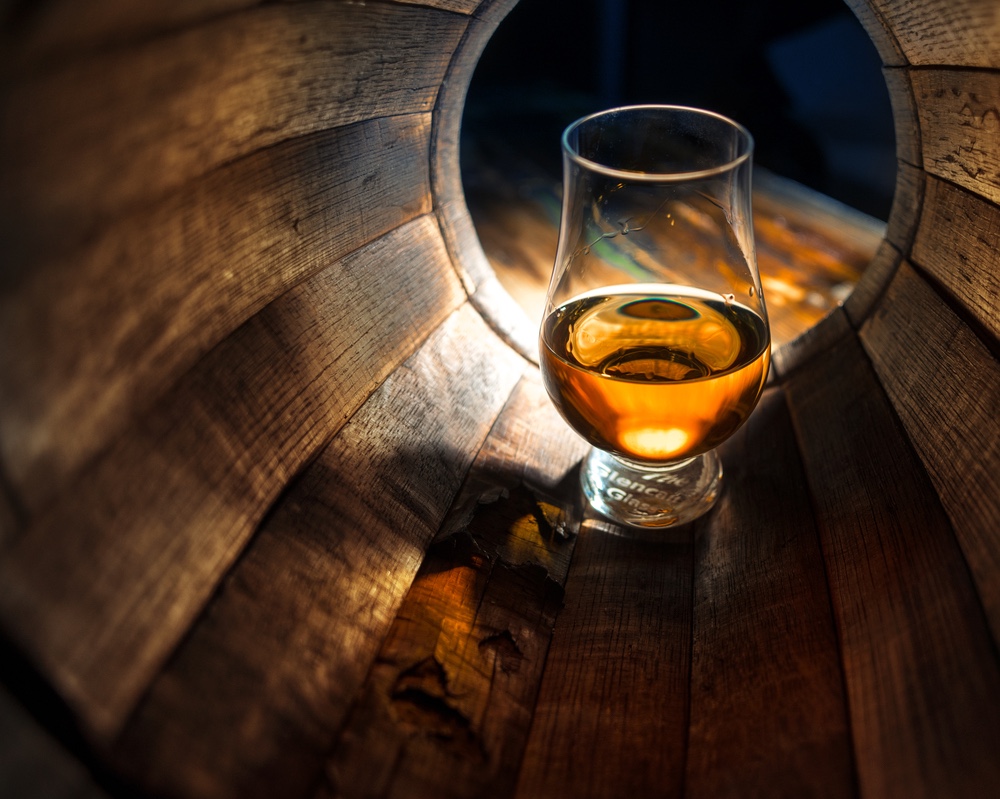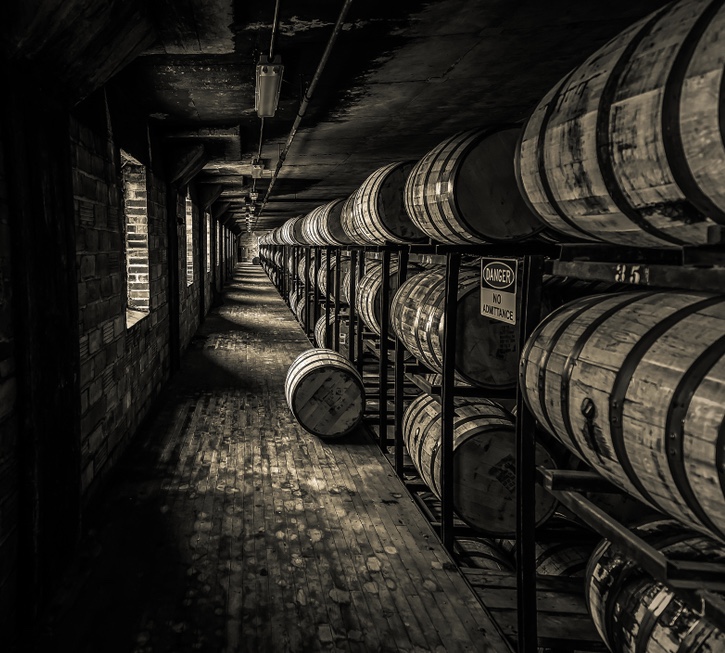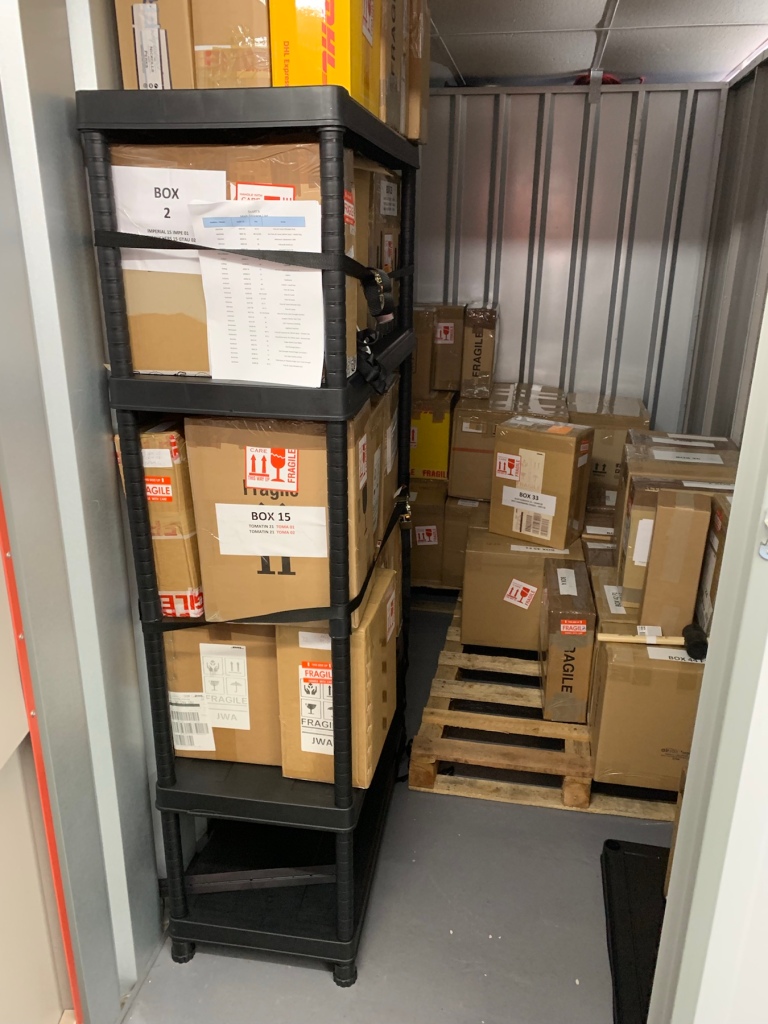This part of the journey has concluded.
We’ve now reached the end of the insurance claim process and I’m at the point of payout. Now seems a good time to wrap up the procedure and the precautions and advice I have about my experience. There are links to the companies I mention in the article at the end. This is not a promotional piece but a summary of my experience of the whole process, and I feel it would be remiss of me not to share the details of the companies used and my feelings about the service provided. I’ve included some pictures of the damaged bottles and cartons.
With a quick email it was over just as quick as it started. My insurance underwriters are prepared to pay for the loss in value to my collection. 21 bottles worth just a shade under £6000 and now they assess there has been £1000 loss in value. Realistically this is the best situation I could be in as all the bottles are still drinkable and had they been written off by my insurer I would have maybe not got the chance to purchase the ones I wanted to taste. Now that decision is mine. I’m not so sure that the value now is worth what was determined it to be post flood, but that is the thing with auctions – it could well be more or I get the chance to crack open a bottle I otherwise might not have.
Looking back on the experience from the horror of the first call to inform me there has been a problem to where I am now, the experience has not been as bad as first feared and indeed has been a lot smoother than expected. Let’s look at the reasons for this, for if there is one thing I’ve discovered, planning ahead prevents or limits disasters.

Find a decent storage area or facility
I use a storage facility in Perth. It’s about 70 miles from my house but prevents wee accidents when I maybe fancy cracking into something that I have bought as an investment. Ask the facility about their flooding record, ask about flood prevention. Look at security and the condition of the building. Is it likely to suffer flooding from a watercourse? Is it in good repair – does the roof look likely to leak? It’s always better to get an internal storage unit as it is less impacted by the changes in temperature. Going for a first floor locker prevents accidents like mine. Be aware those close to a metal roof are more likely to suffer variations in temperature and could affect your seals.
Keeping the collection at home? Keep it in a darkened place so the whisky isn’t exposed to direct sunlight or variations in temperature.

Get Insured
If using a storage facility, make you are well insured. Out of around 130 storage units in my facility, only 27 had any sort of insurance. Close to 100 units were flooded (some of the external containers did not get affected), and many of the insured only took the basic level of insurance which was £1000. However, the value of the items damaged was a lot higher and people have been left out of pocket.
I knew my items have high value, so using the facility insurance provision was not economic. So I insured via a specialist broker, Bruce Stevenson insurance brokers. Not only was this a great product, the service provided by them has been exemplary. I felt really guilty having only started my policy in April to making a claim in August, but that’s what insurance is for. I’m impressed by the friendly and efficient service I received, especially from Alexandra Richards, the broker that dealt with my claim.

The process was easy – one phone call and e-mail started the ball rolling. All I had to do was access my locker, record the damage and provide the details to them. They sorted the rest. They arranged a loss adjuster to see the damage who assessed how much damage had been done. I already had an estimate by time my loss adjuster arrived, so was already ahead of the game. That is why it pays to know the value you paid for your bottles and an idea of what they are worth as time goes on.
The loss adjuster reports back to the insurance company about the damage, having taken advice from a valuation expert. Then it is just a case of waiting to see what the insurance company will do. Alistair Spence of Criterion Loss adjusters gave some good advice about my situation and was very reassuring about the whole process.
If you are storing at home, make sure your home insurance will cover you in the event of flood and fire. Just because you only paid £35 for a Speyburn Flora and Fauna in 1991, doesn’t mean that it is still worth that amount. It can be well into the £2000+. If that gets destroyed would your insurance cover you?
Indeed, those with large collections at home may find themselves seriously underinsured as most policies have a limit per item, and above that will require each individual high value item individually listed. Be aware, large collections in the home will be seen as a fire hazard, something pointed out to me by my home insurance company that uses a red telephone on wheels as its logo.

scrapped due to this.
Valuation
I now know a couple of whisky brokers, and was lucky enough to have one who valued my damaged items for a nominal figure acceptable to any tight Aberdonian. However it is important to have an idea of what your collection is worth. Companies like Rare Whisky 101 monitor the prices at auction of bottles, and will provide a valuation or you can use the Bottle Valuation Index service which you can use to track your high value bottles, but you need to buy credits to use this service. I believe other companies do valuations cheaper, but I’ve used RW101 for a few years now and find the service pretty good and accurate.
Packing
You cannot just keep your whisky collection in its carton and expect it to survive. Part of the reason my collection survived mostly intact was due to the fact I professionally packed it in Airsacs. The only bottles damaged were those not in Airsacs on the lower layer of boxes on the pallets. I’ve learnt a lesson from this and now will flat pack cartons and make sure any packing that could be damaged is now at a level that flooding can’t affect it. Of course; the roof could leak, but I’ve put PVC dust sheets over my boxes to limit the chance of damage.

I use silica gel in all Airsacs, as well as polystyrene nuggets. Don’t use the environmentally friendly ones, as they go to a nasty goo when wet. All my packing materials come from Macfarlane Packaging. Airsacs aren’t the cheapest solution, but the alternative isn’t worth thinking about. The Airsacs on the lower layer of the pallets gave rigidity to the sodden cardboard boxes, keeping more expensive whiskies high and dry. Had this not been the case, then we would have been looking at a high 5 figure loss. If you are collecting whisky and storing it, a £200 investment in storage solutions makes sense and preserves the condition and value of your bottles.
And Alexandra from Bruce Stevenson agrees with me. For any asset it is important that good risk management and protection is key, and hopefully my insurance company sees that I made the adequate provisions for the foreseen threats in choosing a unit with flood protection, not exposed to temperature variation and professionally packed. Nobody foreseen the flood coming up from the drains and overcoming the flood prevention measures. And that’s why we insure.

At home, most of us will want to display our bottles. They are our whisky babies, but we need to store them where light will not fade labels or liquid, away from sources of heat and cold, away from children’s hands that might not drink it but accidentally knock it over and break it. Just be careful. It is understandable that you want to display your pride and joys, but consider where carefully. I know many people who have a whisky cupboard in their homes. Consider one yourself.
Wrapping Up
I’ve considered all these things and still got caught out. Don’t think it can’t happen to you as it can. It’s not the events that you can forsee that catch you, but those you don’t. I’m just very grateful I have had a specialist insurance policy in place which has met each one of my expectations. For around £350 the piece of mind alone has been priceless. I may have been facing a loss over a hundred times the cost of my premium so it is a no-brainer.
Moving On
And now with payment looming I now have the decision of what to do with the damaged bottles. Part of me says sell them and move on. Part of me says drink them. In the case of the 10 year old Macallan this will be happening as I know the value in that bottle, and it is a superb dram. I’m licking my lips already in anticipation and so should my friends as I will be sharing. Of course I am on the lookout for another one, but we will see what comes up. I think a new change of direction is needed. From every disaster comes new beginnings and that is the way the pragmatist in me is seeing it. There will always be new bottles to buy, perhaps with a new focus altogether. Keep an eye on the blog or my social media feeds to find out.
The one thing that bothers me about items like the Macallan 10 is that I paid £240 after fees for it. Auction prices are now £340 then fees on top of that. Although I’ve been compensated fairly, there is an emotional thing that won’t let go. I’d say that once you sell, write off or open a bottle, you need to detach yourself from it. You need to stop tracking it unless you plan to buy another. For me it’s almost like stalking an old lover to see what she’s up to, which is wrong and creepy. Move on to bigger and better things.

I have a couple of things I wish to say in conclusion. Firstly, to all those who wished me well after my disaster, thanks for your support. It could have been a lot worse, but it was very touching to have your support, even though I’ve never met most of the people on the www (world whisky web). I wouldn’t want anybody else to go through what I’ve just experienced. It’s a fact of life we never expect bad things to happen, something that could be summed up by the fact how few in the storage facility had adequate insurance or any insurance at all.
End Notes
It’s also been good to have been helped and advised by others in the whisky industry, and a special shout out goes to Andy Simpson of Rare Whisky 101. The resultant whisky geek out gave me tons of food for thought.
Lastly, I’ve had great service from my insurance company, Bruce Stevenson Insurance Brokers. They’ve ensured what needed to happen did at the right time, good communication and always left me with the impression that my situation was important to them. Despite not being a customer of theirs for very long, I felt every bit as valued as a customer who has used them for years.
I apologise if it seems I’m over promoting this company, but it’s with good reason. Other insurance companies are available but I can only speak from my experience with Bruce Stevenson compared to the cost of others I’ve used in the past. Bruce Stevenson has been recommended to me by several people and that spoke volumes. It’s turned out to be a good call.
Insurance can seem like that unnecessary expense that could be dispensed of to buy another bottle, but don’t lose your kingdom for the want of a nail.
Link to Bruce Stevenson insurance broker
Link to my blog article on storage and packing
Yours in Spirits
Scotty
This is written as a hobby, and I appreciate your likes and shares, either on WordPress, or why not visit one of my other social media channels. Lets spread the whisky love!
Scotty’s Drams encourages responsible drinking. To find out the facts about drink, and where to find help if you need it visit Drinkaware.co.uk by clicking on the link.
Photo Credits
All Photos – Authors Own


































